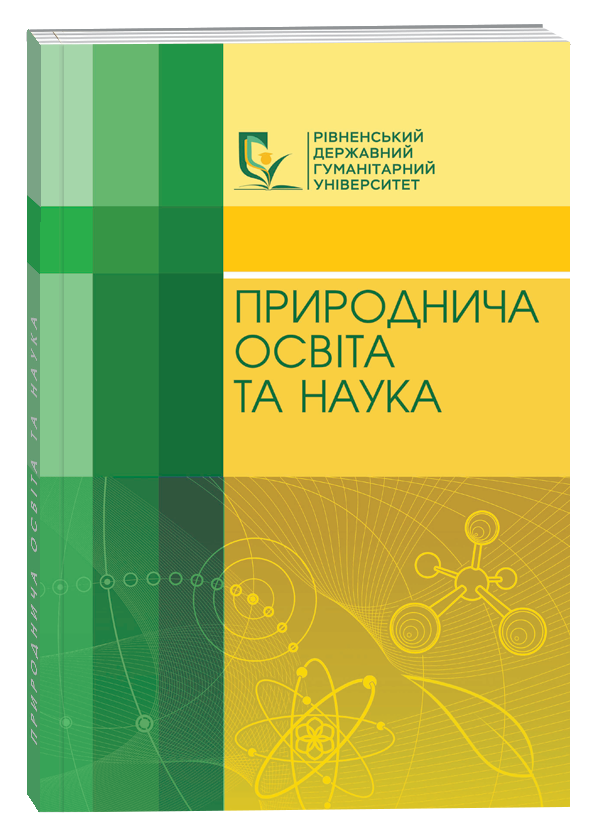DOMINANT AND SUBDOMINANT ASSOCIATIONS OF PLANT GROUPINGS IN THE WATERS OF THE RIVERSTYR WITHIN THE BORDERS OF RIVNE REGION
Abstract
The study deals with a geobotanical assessment of the existing hydrophilic flora of the river Styr within Rivne region. The research is based on the author’s monitoring studies. The paper outlines main point sources of river water pollution and their impact on the formation of the biotic component of the studied hydroecosystem. The author has carried out the analysis and assessment of aquatic and coastal aquatic vegetation in certain sections of the river Styr according to floristic, geobotanical, and coenopopulation research directions. It has been found that the species composition of plant communities in different sections of the river was not the same. Some species are characteristic only for a certain studied area. As a result of field research, the study outlines 125 species of higher vascular plants belonging to 75 genera and 38 families. The species composition includes 7 dominant families: Poaceae, Potamogetonaceae, Asteraceae, Cyperaceae, Polygonaceae, Ranunculaceae, Saliсaceace, which are 46.4% of the species composition. The author identifies such dominant genera as: Potamogeton, Salix, Juncus, Rumex and Carex; 8 species are adventitious plants. Other identified species represent the aboriginal flora of Rivne region. The paper highlights that the studied hydroecosystem of the river Styr within the region is characterized by the intensification of transformation processes associated with economic activity and climatic factors. The analysis of geobotanical characteristics has identified 14 plant groups. Within the middle reaches of the river Styr, the following groups are presented: Batrachietum circinati, Glycerietum maximae, Lemnetum minoris, Lemno minoris – Spirodeletum polyrrhizae Potametum perfoliati, P. pectinati. The coastal aquatic vegetation of the lower reaches of the river is represented by a poor hydrophilic flora. The author emphasizes on the fact that in a separate section of the lower reaches of the river (from the village of Zarichne and the village of Ivanchytsi), a rich and diverse species composition of hydrophilic flora has been identified. Cenopopulation studies of individual sites indicate the presence of 6 populations of rare species: Pulicaria vulgaris, Hippuris vulgaris, Batrachium rionii, Nymphaea candida (dead arm of river); Batrachium circinatum (the village of Verben); Potamogeton gramineus (the village of Ivanchytsi). The highly vulnerable species Batrachium rionii, which is included in the Red List of Hydroflora of Ukraine, was first found in the hydroecosystem of Rivne region. In total, 71.2% of species were found in the lower reaches of the river.
References
2. Гриб Й. В., Сондак В. В., Володимирець В. О. Зміни угруповань видів індикаторів вищих водних рослин Хрінницького водосховища після повторного затоплення. Вісник УДУВГП. 2 (21). 2003. С. 3–10.
3. Гроховська Ю. Р., Володимирець В. О., Кононцев С. В. Раритетні види та угруповання вищих водних і прибережно-водних рослин Рівненської області. Вісник НУВГП. 2 (62). 2013. С. 182–197.
4. Дубина Д. В. Класифікація вищої водної рослинності України: стан та перспективи. Укр. фітосоц. зб. Сер. А. Київ, 1996. № 3. С. 6–14.
5. Дубина Д. В. Вища водна рослинність. Київ, 2006. 412 с.
6. Egertson C. J., Kopaska J. A., Downing J. A. A century of change in macrophyte abundance and composition in response to agricultural eutrophication. Hydrobiologia. 2004. 524. 145–156. DOI: 10.1023/B:HYDR.0000036129.40386.
7. Копилов А. І., Косолапов Д. Б., Лазарєва В. І., Мінєєва Н. М., Пряничникова Є. Г. Структура, біомаса та продукція біотичної складової екосистеми зростаючої евтрофної водойми. Різноманітність біосистем. 26 (2). 2018. С. 117–122. DOI: 10.15421/011818.
8. Kornaš A. Geograficzno–historyczna klasyfikacja roslin synantropijnych. Mater. Zakl. Fitosocjol. Stos. U.M. 1968. 25. Р. 33–41.
9. Мусієнко М. М., Ольхович О. П. Методи дослідження вищих водних рослин : навч. посібн. Київ: Видавничо-поліграфічний центр «Київський університет», 2004. 60 с.
10. Прокопчук О. та Грубінко В. Досліди з накопичення фосфору в рослинах Myosotis palustris, Glyceria maxima та Nasturtium officinale. Різноманітність біосистем. 24 (2). 2016. С. 437–443. DOI: 10.15421/011659.
11. Chao W., Sha-Sha Z., Pei-Fang W., Jin Q. Effects of vegetations on the removal of contaminants in aquatic environments: A review. J. Hydrodynam, 2014. 26 (4). 497–511. DOI: 10.1016/s1001-6058(14)60057-3.
12. Chambers P. A., Lacoul P., Murphy K. J., Thomaz S. M. Global diversity of aquatic macrophytes in freshwater. Hydrobiologia. 2008. 595 (1). 9–26. DOI: 10.1007/s10750-007-9154-6.
13. The Plant List: a working list of all plant species. URL: http://www.theplantlist.org/.
14. Толочик І. Л., Володимирець В. О. Вищі водні та прибережно-водні рослини окремих ділянок р. Стир у межах Рівненської області. Наукові записки Тернопільського національного педагогічного ун-ту ім. В. Гнатюка. Сер.: біол. 2018. 1 (72). С. 30–35.
15. Федорчук І. В. Фітоіндикаційна роль макрофітів у комплексному моніторингу річкових систем. Роль природно-заповідних територій у підтримці біорізноманіття (м. Канів, 9–11 вересня 2003 р.). Канів, 2003. С. 159–160.
16. Федорчук І. В. Гідроботанічні дослідження поверхневих вод – основа комплексного моніторингу водних екосистем : матеріали І Міжнародної конференції студентів і аспірантів «Молодь і поступ біології» (м. Львів, 11–14 квітня 2005 р.). Львів, 2005. С. 99–100.
17. Чорна Г. А. Рослини наших водойм (атлас-довідник). Київ : Фітосоціоцентр, 2001. 134 с.






